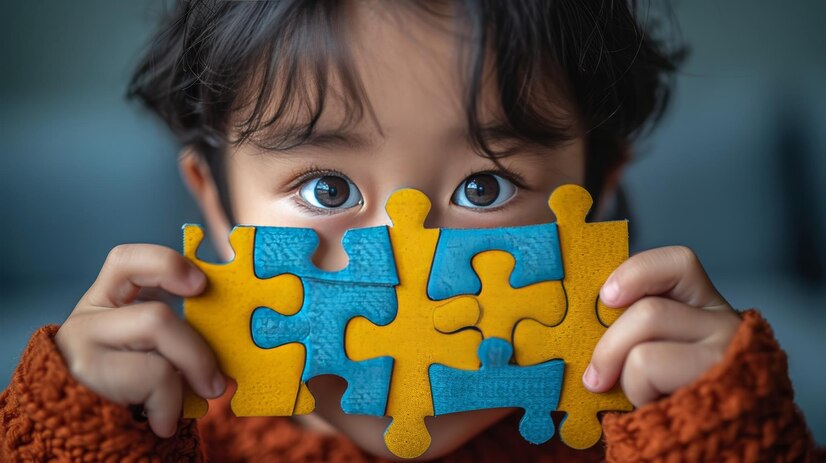
Changes and transitions can be incredibly challenging – especially for children on the autism spectrum as well as their parents. Besides, new routines, environments, and situations can cause significant distress and upheaval for families. However, change is also an inevitable part of life that we can’t avoid forever.
So, how can we prepare children for the transitions and life changes that will undoubtedly come their way?
Here is an ‘all you need to know’ guide filled with valuable tips and resources curated by our experts just for you –
The Importance of Preparation
For children with ASD, abrupt changes with no preparation can be a recipe for meltdowns and distress. Visual schedules, social stories, and countdowns can all help cue kids into what’s coming next. Depending on your child’s needs, you can also start prepping weeks or even months in advance for major life events like a new school, a house move, or a new sibling. Involve your child as much as possible by explaining what to expect and letting them practice new routines.
Stick to Routines As Much As Possible
Children on the spectrum thrive on predictable routines and schedules. During times of transition, try to keep as many existing routines in place as possible. Wake-up times, meal times, play times, TV time – all of these familiar routines can provide an anchor of stability and sameness amid the newness. Identify the key routines that are most calming and reassuring for your child and prioritize keeping those consistent.
Prioritize Rest
It’s also crucial to prioritize sufficient rest and sleep for children during periods of change and transition. Increased fatigue combined with added stressors can quickly lead to dysregulation and meltdowns. Make sure to protect your child’s sleep routines and build in extra downtime wherever possible to recharge their batteries. Well-rested kids simply cope better with transitions.
Read: How Can I Help My Child with ASD Sleep Better?
The Power of Visual Supports
When it comes to explaining change to children, visual supports are key! Visual schedules with pictures or words showing the progression of a day’s events can eliminate surprises. Social stories – short narratives with pictures describing an upcoming experience or change – can ‘show’ a child what to expect before it happens. Video modeling with real footage of new environments or experiences and transition objects can further prepare a child for what’s to come.
Allow for Regression and Adjust Expectations
Transitions and change, even positive ones, cause stress. With increased stress and anxiety, temporary regression in skills and behavior is extremely common in children on the spectrum. While a normally verbal child may stop speaking as much for a period, a child who was previously fully toilet-trained may start having accidents. Meltdowns and shutdowns over minor things may spike. As parents, it’s important to be prepared for this regression, adjust expectations temporarily, and be patient as our child adjusts to their ‘new normal.’
Lean On Your Support System
No parent can or should go through major life transitions alone! Reach out to your network of supporters – family, friends, therapists, and teachers – for help and respite, and make sure you also prioritize your own well-being during these stressful periods of change. You can also ensure that your child’s ABA therapist is in the loop about upcoming changes so they can reinforce coping strategies. Other parents can be great sounding boards and idea-sharers, as well. It’s true; having a strong support system can make all the difference.
Speaking of ABA therapy, during transition periods, this evidence-based autism treatment can be invaluable. ABA is all about breaking skills down into manageable steps and using a variety of methods, like positive reinforcement, to shape behaviors. ABA therapists, especially those working closely with Early Autism Services (EAS), are pros at using techniques like:
- Task Analysis – Breaking down new/changing skills into smaller steps to practice
- Video Modeling – Showing videos of new routines and environments ahead of time
- Reinforcement Systems – Providing rewards and incentives to increase coping and adaptive behaviors
- Visual Supports – Creating personalized visual schedules, scripts, stories and reminders
- Teaching Coping Strategies – Deep breathing, identifying emotions, requesting breaks
- Generalization – Practicing new skills across different settings and with different people
Your child’s ABA team can be instrumental in thoroughly preparing for, guiding through, and debriefing after major transitions. One could never underestimate the power of the external support, strategies and perspectives that EAS can provide – our success stories and positive parent and children experiences speak volumes about this!
Transitions and change are a part of every child’s life, both neurodivergent and neurotypical. But for kids on the spectrum, those shifts in routine and normals are often exponentially tougher to handle. By preparing thoroughly, leaning on your support system, adjusting expectations, and using proven ABA techniques, we can ease them through life’s inevitable changes as smoothly as possible.
It won’t be easy, but nothing worth doing ever is – and seeing our kids learn to adapt and grow is always worth it.
The earlier therapeutic interventions and support begin for a child on the autism spectrum, the better equipped they will be to handle future transitions and life changes down the road. That’s why at Early Autism Services (EAS), we can’t emphasize enough the importance of seeking early intervention as soon as possible after an autism diagnosis.
Our team of specialized autism therapists uses evidence-based approaches like ABA to start laying the critical foundations of flexibility, coping skills, communication tools, and more from a young age. We work hand-in-hand with families to create individualized transition plans, introduce visual supports, teach emotional regulation techniques, and practice generalizing skills across settings.
Since we understand that every child’s needs are different, we aim to collaborate closely with parents to determine what transitions their child may face and get ahead of proactively preparing.
The sooner families connect with EAS, the sooner we can begin building that stability, consistency and readiness for life’s inevitable changes. So, don’t wait – get in touch with us right away to discuss an early intervention plan tailored specifically to your child and family’s needs. With the right therapeutic support in place from the start, transitions become that much more manageable.



Recent Comments